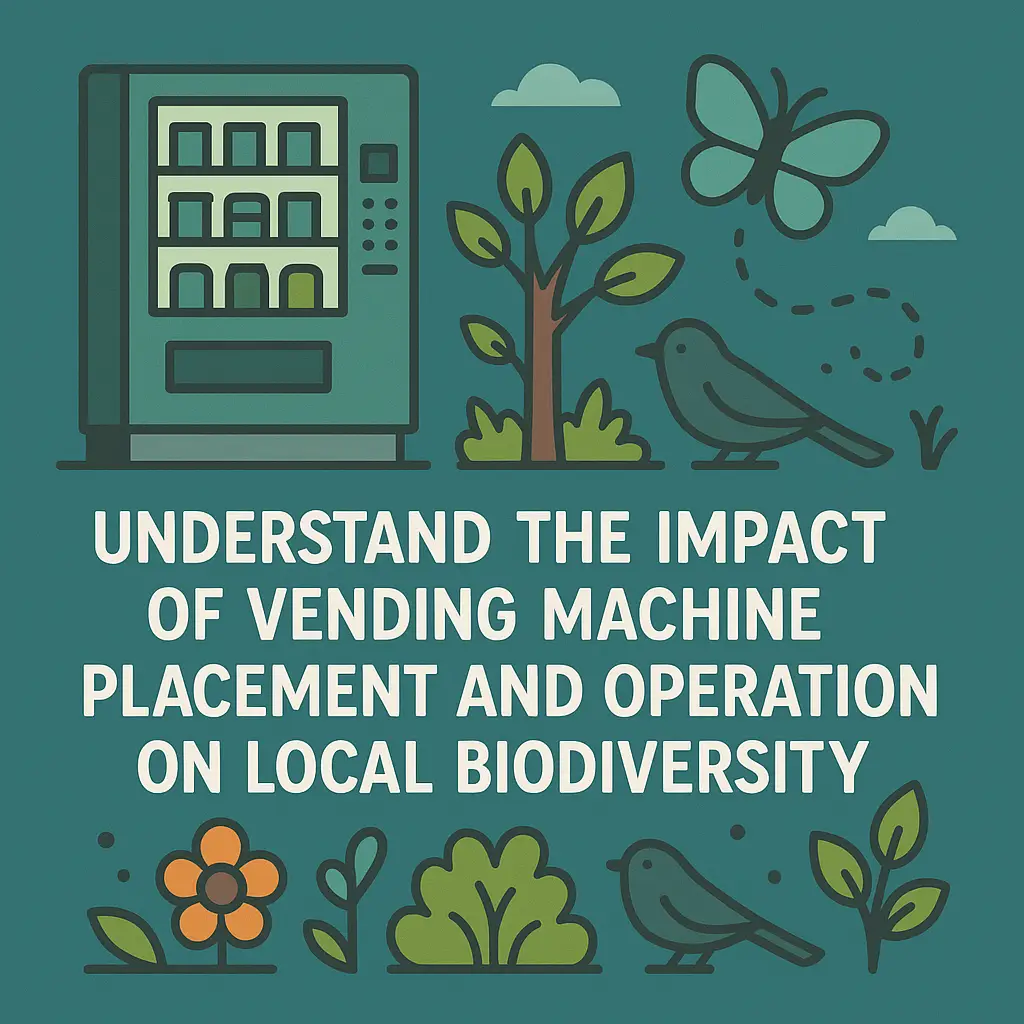Biodiversity and Vending Machine Locations
Understand the impact of vending machine placement and operation on local biodiversity. Find ways to ensure your vending business supports ecological health.
Back to Eco Friendly Vending ResourcesUnderstand the impact of vending machine placement and operation on local biodiversity. Find ways to ensure your vending business supports ecological health.
Back to Eco Friendly Vending ResourcesStrategic placement, along with eco-friendly machine choices and responsible waste management, helps minimize the environmental footprint of vending operations, protecting local ecosystems.
![]() Minimizing habitat disruption through thoughtful placement
Minimizing habitat disruption through thoughtful placement
![]() Reducing energy consumption with advanced machine technologies
Reducing energy consumption with advanced machine technologies
![]() Promoting recycling to lessen waste impact on natural areas
Promoting recycling to lessen waste impact on natural areas

As businesses increasingly recognize their environmental responsibilities, the placement and operation of vending machines in areas close to nature or in urban green spaces warrant careful consideration. The impact of vending machines on local biodiversity can range from subtle disturbances to more significant effects, depending on planning and execution. Understanding these factors is key to implementing truly eco-friendly vending solutions.
The initial step in minimizing impact is strategic placement. Areas rich in biodiversity, such as nature reserves, wildlife corridors, or even urban parks with significant green cover, require extra vigilance. Avoiding disruption to plant life, animal habitats, and migration routes should be a top priority. This often means placing machines in paved, high-traffic human areas rather than encroaching on natural spaces, reducing light and noise pollution, and ensuring that any associated infrastructure, like power cables, is installed sensitively.
Another major factor is energy consumption. Traditional vending machines can be energy-intensive, contributing to greenhouse gas emissions. However, modern vending technology has made significant strides in energy efficiency. Opting for Energy Star certified vending machines, which boast lower power consumption, can dramatically reduce a machine's carbon footprint. Further improvements can be gained by using machines with low-power cooling systems or even exploring solar-powered vending machines for appropriate outdoor locations.
Waste management is arguably the most visible impact vending machines have on biodiversity. Discarded plastic bottles, aluminum cans, and snack wrappers can become litter, posing a threat to wildlife through ingestion or entanglement. Implementing robust recycling programs with clearly marked bins adjacent to vending machines is essential. Moreover, businesses should prioritize stocking eco-friendly products, such as those with biodegradable packaging, or reusable containers, to reduce the overall volume of waste generated. This conscious choices help to uphold ecological balance even in commercial settings.
Poorly chosen locations can disrupt natural habitats, contribute to light pollution, or increase waste in sensitive ecosystems.
Energy consumption, waste generation from packaging, and the potential disturbance of wildlife due to light or noise are main concerns.
Yes, by careful site selection, using energy-efficient models, and implementing robust recycling programs.
Avoiding locations near wildlife corridors, sensitive nesting sites, and areas with high ecological value is crucial.
Artificial light at night can disorient nocturnal animals, disrupt migration patterns, and interfere with breeding behaviors.
While generally low, continuous operational noise can disturb sensitive species, especially in quieter natural environments.
Improperly disposed packaging can become litter, harm animals through ingestion or entanglement, and pollute soil and water.
Utilizing Energy Star certified machines, low-power cooling systems, and powering with renewable energy can significantly reduce impact.
Providing accessible recycling bins, clear signage about waste disposal, and offering products with sustainable packaging.
Yes, by offering locally sourced or environmentally certified products, or through partnerships with conservation organizations for revenue sharing.